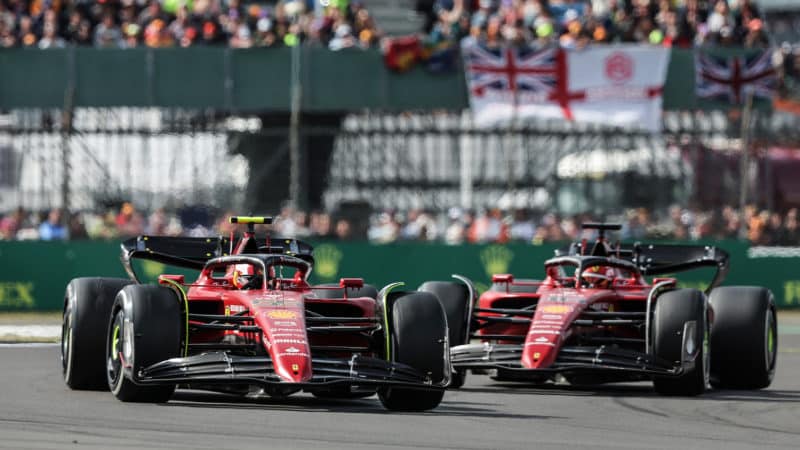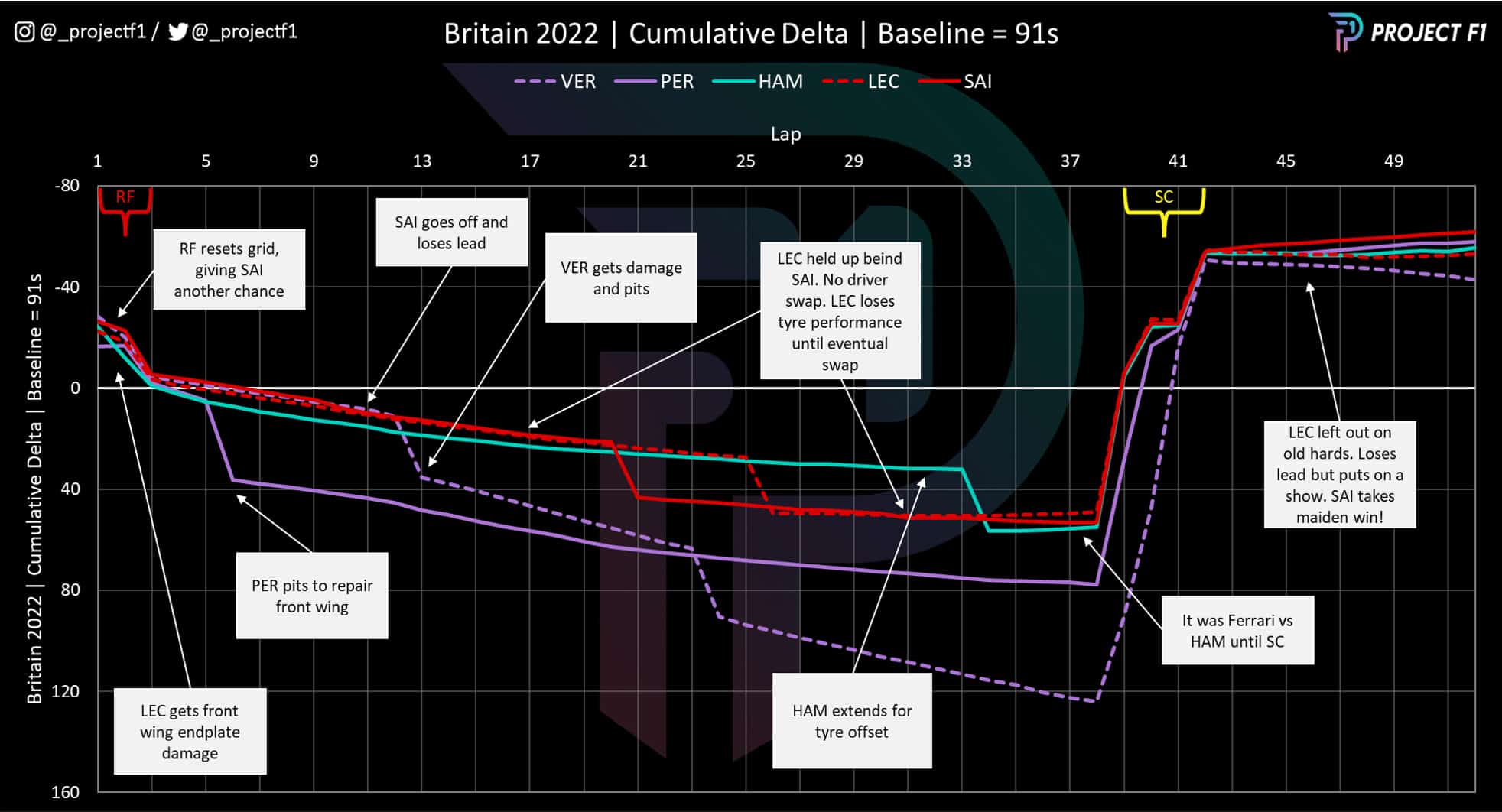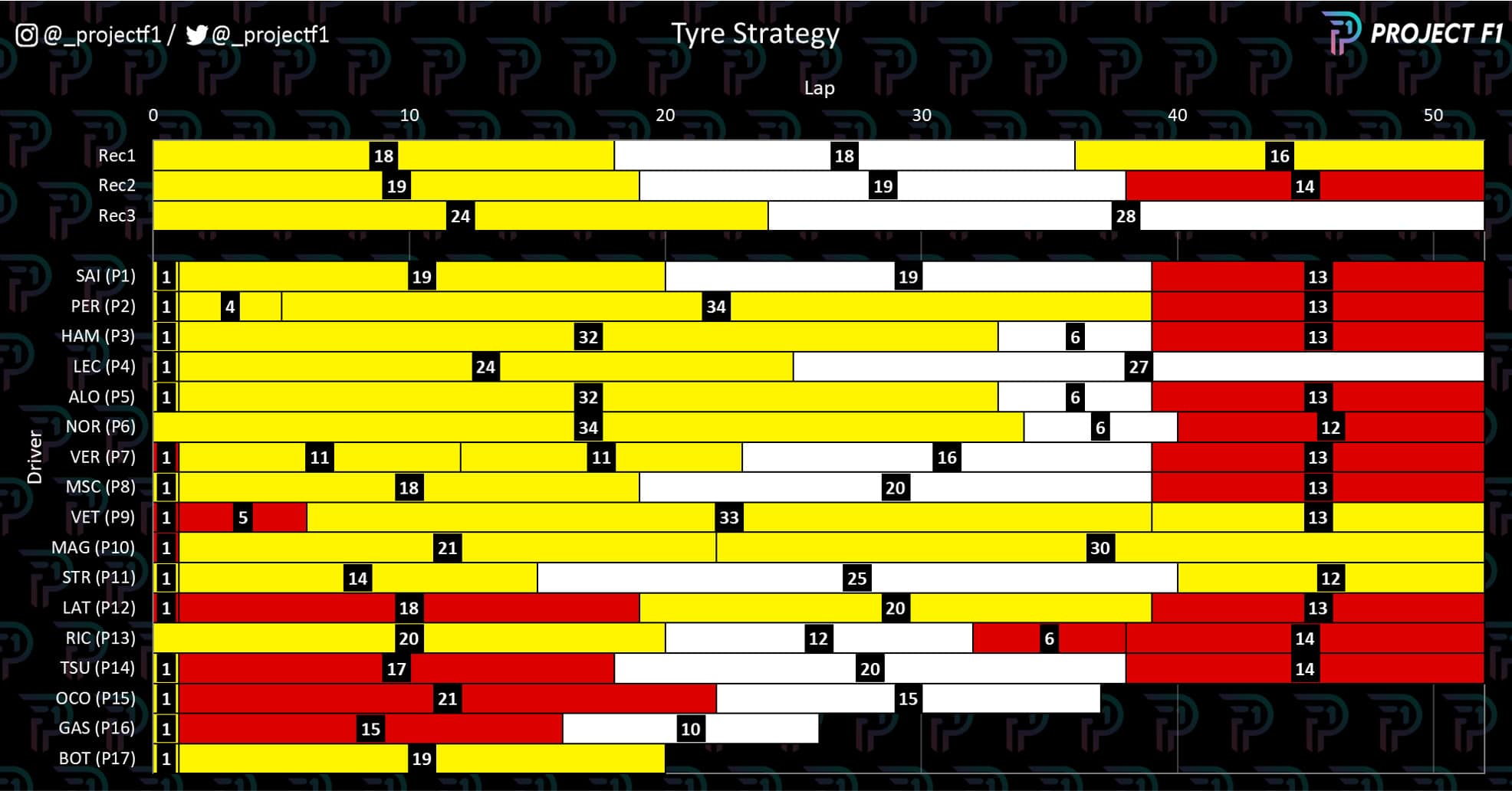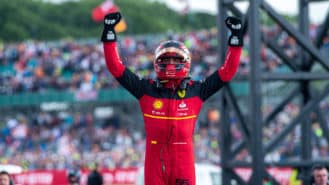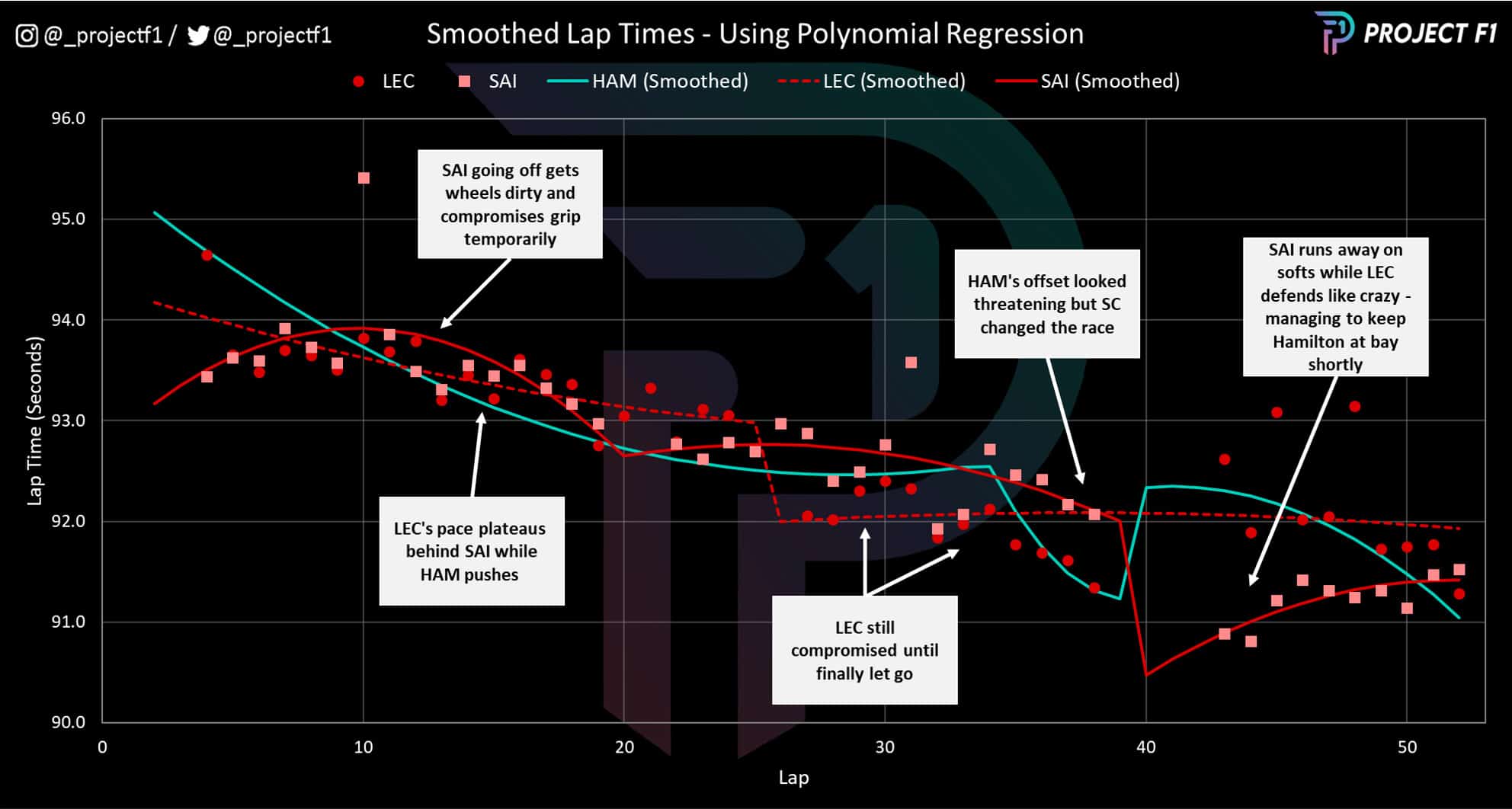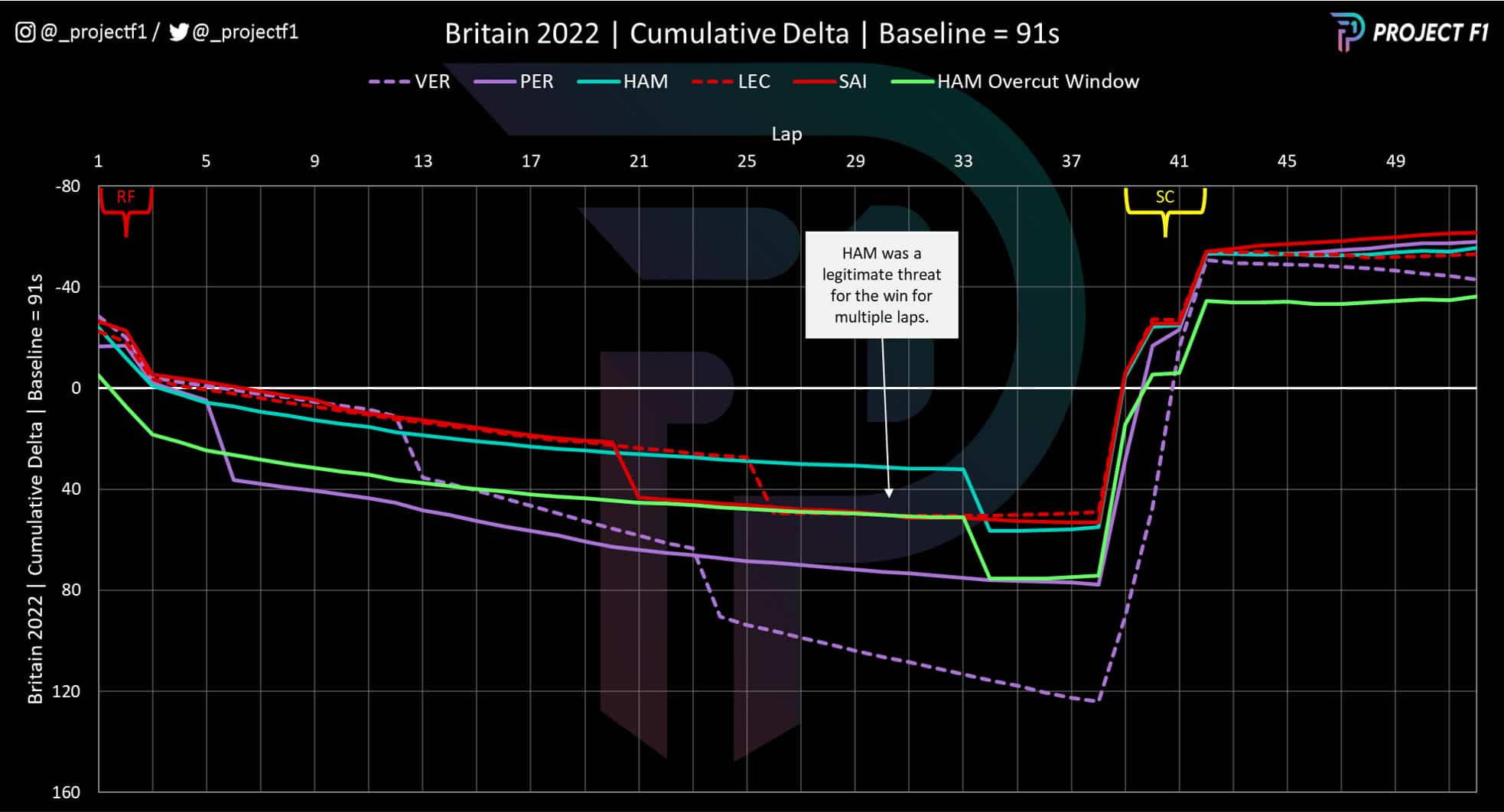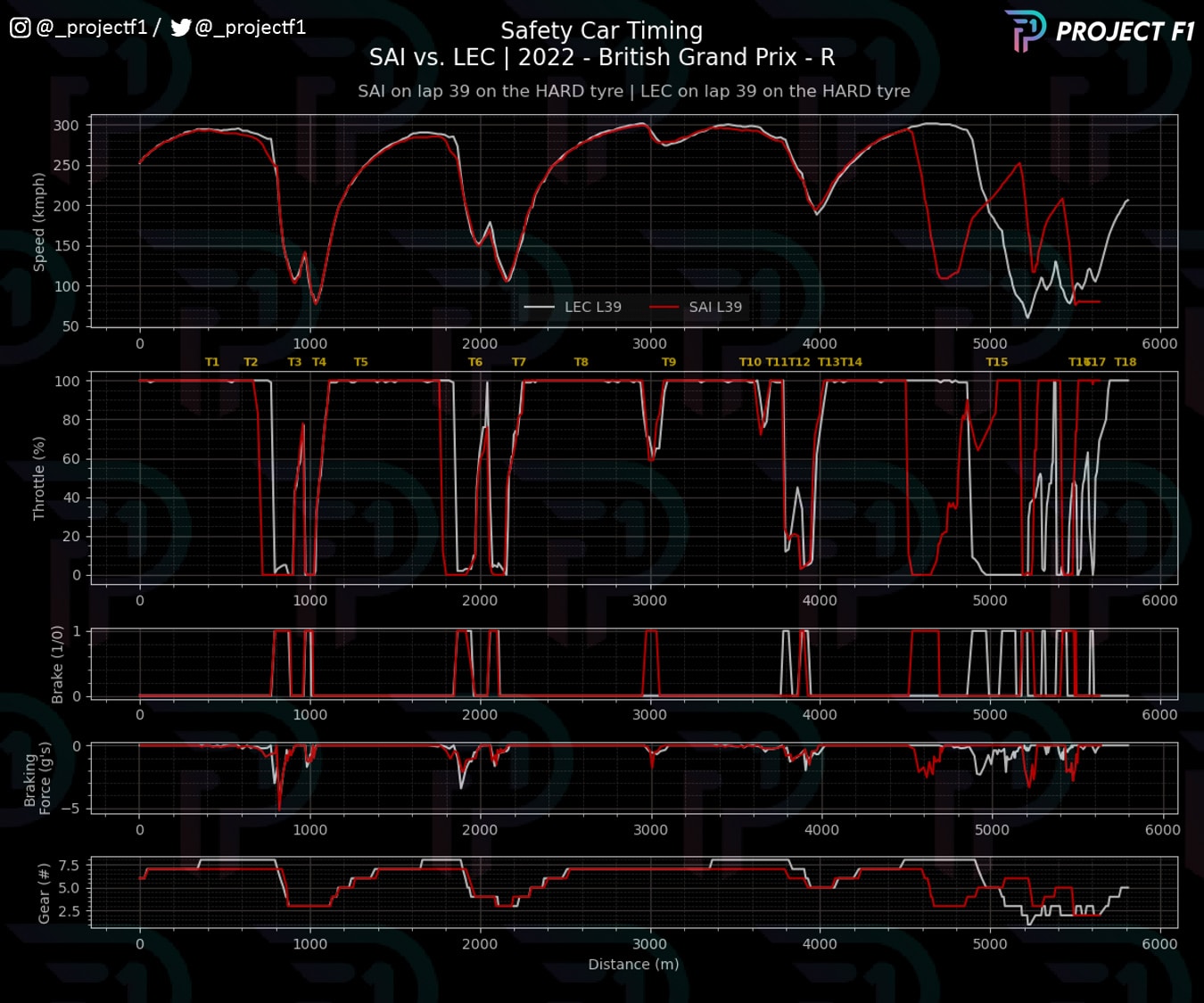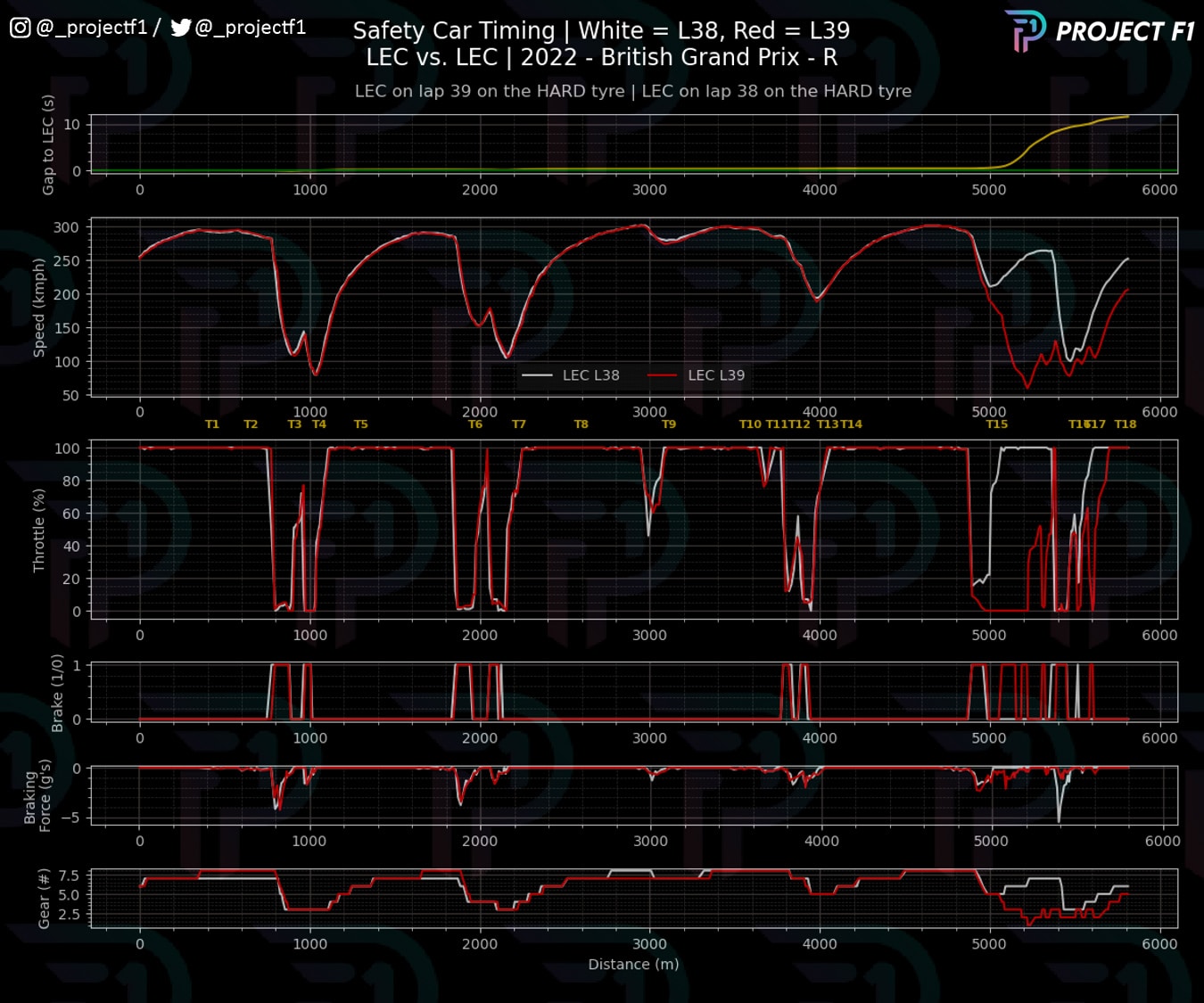Sainz also learned from the first start and took a more aggressive approach at the restart, maintaining the lead. Leclerc had another poor start and was behind Perez. The Monégasque made a daring move into T4 that resulted in a tangle causing both himself and Sergio Perez some front wing damage. Perez would go on to pit for repairs while Leclerc would carry on – as shown above.
Leclerc’s damage and subsequent loss of pace would be a second lifeline for Sainz, who was initially unchallenged by his team-mate in his campaign for a maiden victory.
As the tempo of the race settled, Sainz went wide through Becketts and had to take to the dirty run-off when rejoining the track, yielding the lead to Verstappen.
But another lifeline was about to appear as, two laps later, Verstappen slowed due to floor damage that forced him to pit early and took him out of contention for the fight at the front.
With both Red Bulls down the order and Ferrari first and second, Ferrari looked poised to complete a massive points haul for both the drivers’ and constructors’ championships.
Chart 3: Trend race pace, Leclerc vs Sainz vs Hamilton
Scroll up to chart 1 and see how Leclerc is held up by Sainz: the solid red line representing the Spaniard is shadowed closely by the red dashes of Leclerc.
Chart 3, above, illustrates the difference in pace, with the trend offering a better illustration of how fast each driver was able to go.
Leclerc starts the race strongly, despite suffering damage on the first “proper” racing lap. It only takes three laps to get back to the same pace as Sainz, who is in clean air at the front of the pack. Not long after this and Leclerc’s trend pace is starting to look more competitive than Sainz’s.
Leclerc’s lap times became compromised due to the dirty air
Sainz’s off-track adventure was costly on lap 10 and it imposes a further tax on his pace for the next two laps. With Leclerc trailing closely behind, this affects him as well and continues even after Verstappen comes into the pits.
At this point, Ferrari should have been asking itself whether a driver swap would have been sensible — Leclerc certainly was over the radio. The graph suggests that the answer should have been yes, especially considering Mercedes’ increased threat, with Hamilton lurking in third.
